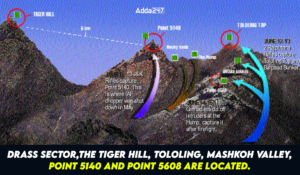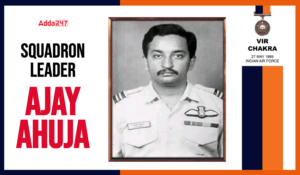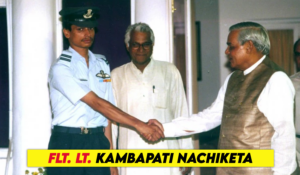Table of Contents
Since independence, India and Pakistan relations have faced turmoil on both community and diplomatic lines, leading to wars. India has fought four wars against Pakistan, none initiated by India, but all were brought to an end by India and its victories. The last in this series of wars was the Kargil War.
Kargil Geography
Before we start with the discussions about Kargil war we should make note of Kargil’s geography it will help us understand the situation better.
Kargil is bounded to the south, east, and west by the districts of Kashmir and to the north by Pakistan, which has sent troops into the region. The Zojila and Fotulla passes, which serve as entry points to Leh and Kashmir, are located here. The heights also offer an advantageous viewpoint and placement for bombing mortar rounds on NH-1, which would cut off the Kashmir Valley from Ladakh. Kargil’s geography and frigid temperatures make for a difficult climate.
Reason of Kargil War
The genesis of the Kargil War can be traced back to 1984, when India took control of what is known as the highest battlefield in the world: the Siachen Glacier, on 13th April, following Operation Meghdoot. Siachen is crucial due to its strategic position, as is Kargil. To avoid any similar situation in Kargil, a division was specially raised by the Indian Army and deployed to plug the gaps in Kargil.
Pakistan had also failed in its hinterland terrorism operations in Punjab, and later, after the end of the Afghan-Soviet war in 1989, it started to disturb Jammu and Kashmir with state-sponsored terrorists. To deal with these state actors, the division deployed in Kargil was moved to affected areas to combat terrorism, leaving Kargil with only the Kargil Brigade and significant gaps.
Pakistan kept the Kargil area relatively quiet and engaged in friendly talks with India. It should be noted that Atal Bihari Vajpayee had visited Pakistan in February 1999 to inaugurate a bus service between the two states, which was seen as a bold step in the relations of the two countries. However, just three months after this visit, war broke out.
India’s Response on Kargil War
On learning about the occupation of vacant posts in Kargil by Pakistan, India launched Operation Vijay with the aim to reoccupy its positions and push Pakistan back to its territory. India not only took military actions but also tried diplomatic paths. However, Pakistan maintained that those involved were independent Kashmiri militants and that Pakistan couldn’t intervene. The war lasted for months. Why did it last so long? Just months before General Malik took charge as COAS, the army had a major reshuffling of general and operational ranks. This required officers assuming new roles time to understand the situation, terrain, subordinates, and methodologies to better respond.
Kargil War and The World
- China – A long time Pakistani ally maintained a diplomatic stand on the issue and insisted on a pullout of forces to the pre conflict positions.
- G8 – Supported India and condemned the violation of LoC by Pakistan at Cologne summit.
- ASEAN – The regional forum also supported India and its stand of not violating LoC.
- US – Kargil is a difficult terrain for a war zone, and to protect our soldiers, better planning was necessary, which included the use of satellite images. India requested satellite images from the USA, which possessed GPS capabilities, but the images were not shared initially. However, President Clinton asked Prime Minister Sharif to withdraw the irregular forces and appreciated India for not crossing the LoC.
- Israel – Israel provided India with crucial military supplies, including precision-guided munitions and surveillance drones.
- Russia – Supported India’s stance on the issue.
Forces and Kargil
The Kargil war never reached the scale of the 1971 war, but all forces were put on alert for any possible incursion into Indian territory by Pakistani forces. The Kargil war was mainly managed by the Indian Army and the Indian Air Force; the Navy had little involvement in the waters. Nevertheless, the Indian Navy launched Operation Talwar to ensure the security of Indian waters.
Indian Army – As discussed earlier, the Indian Army launched Operation Vijay in response to intrusions and successfully reoccupied all major positions from the Batalik sector to the Mushkoh valley, including Tololing, Tiger Hill, and Jubar Heights.
The artillery regiment played a very important role in dealing with enemy troops due to their accuracy and power, particularly the Bofors artillery guns. The maximum number of casualties on the enemy side were attributed to the artillery regiment. Almost 250,000 shells were fired throughout the entire duration of the conflict.
Unmanned Aerial Vehicles (UAVs), often referred to as drones, played an important role in ensuring continuous surveillance and effective planning to minimize casualties and secure victory.
The interception of conversations involving Parvez Musharraf was a credible move and a turning point that garnered global support for India, substantiating its stance and boosting the country’s morale on the global stage, while also revealing the true face of the Pakistani military.
Indian Air Force – In one of his interviews, the Air Chief shared that when he learned that the army was insisting on preparing helicopters for attack, he was not in favor of the move. The Air Force is considered a strategic weapon, and he thought it might escalate tensions between the two countries. However, considering the gravity of the situation, he permitted the use of the Air Force and Indian Air Force launched Operation Safed Sagar.
On 27th May, Flt. Lt. Kambampati Nachiketa and Squadron Leader Ajay Ahuja were flying when Nachiketa’s MiG-21 was hit by a Stinger missile, forcing him to descend. Squadron Leader Ajay Ahuja attempted to locate Nachiketa’s position to aid in his rescue mission but was targeted by a Pakistani Anza Surface-to-Air Missile. Ahuja ejected and landed in Indian territory, but he was unfortunately captured by Pakistani soldiers. The postmortem report revealed that he was shot from point-blank range, which was considered a war crime.

Following days, India lost more helicopters and jets to American-made Stinger missiles used by Pakistan.
As for Nachiketa, he had landed in Pakistani territory and was eventually handed over to the Red Cross. Subsequently, he was repatriated to India.

The support of Israel played a crucial role during the war when the Indian Air Force was struggling to achieve clear views. Israeli engineers visited India and assisted with the installation of pods designed for improved vision and Laser Guided Bombs (LGBs). At that time, the Air Force had about 60 LGBs, which were strategic for the war in case it escalated. Therefore, the Air Force decided to use regular bombs, relying entirely on the pilots’ skills to bomb and destroy Pakistani camps.
The Air Force made a significant strike when three Jaguars on a reconnaissance mission identified a Pakistani arms and ammunition dump in Manto Dhalo, which was crucial for logistic supplies. This dump was destroyed by the Air Force, and the army made the final move by capturing Tiger Hill.
After this, the war was officially declared over with India’s victory.
Kargil War and Aftermath In –
Pakistan
- Pakistan accepted its involvement in Kargil war and awarded Captain Karnal Sher Khan with Nishan-e-Haider for his bravery during the Kargil war.
- Pakistan’s true face brought out with this war and was condemned for it’s actions by the world.
- Pakistani generals as usual blamed the government for their defeat in the war.
- Two weeks after the official end of the war, a French-made Pakistani reconnaissance aircraft, the Atlantic, entered Indian airspace for about 10 kilometers. This Pakistani aircraft was intercepted by an Indian MiG and was asked to descend into Indian territory, but it maneuvered for an attack. Consequently, it was taken down by Squadron Leader P.K. Bundela.
- First, the defeat and then this incident were a matter of shame for Pakistan. Even the International Court of Justice denied any compensation to be paid by India for the aircraft and the pilot.
- This made the Pakistani generals frustrated, leading to a coup in Pakistan when Pervez Musharraf took control of the government and imposed military rule.
India
- India had lost many of its brave officers and soldiers for the victory in this war.
- Many questions were raised during and after the war about the system glitches because of which such situation has arrived.
- Officers and soldiers were awarded for their bravery and their sacrifices in the war.
- The Kargil War Memorial, also known as Dras War Memorial, is a war memorial built by the Indian Army in the town of Drass, near Kargil for commemorating the 1999 Kargil war between India and Pakistan.
- To overcome and review the short comings in the then existing system Kargil Review Committee was constituted.
Kargil Review Committee
After learning about the war details we should discuss the key recommendations of Kargil Review Committee as it is important for strengthening the Indian borders and army to avoid any such situation. KRC was headed by K.Subrahmanyam, retired Indian Administrative Service officer and head of the National Security Council Advisory Board (NSCAB).
Key findings of Kargil Review Committee –
- Lack of coherence between army and intelligence.
- Lack of coordination between army, air force and navy.
- Lack of border infrastructure and its importance for human intelligence and technological advancement.
- National Security System (NSS)
- A centralized communication and electronic intelligence agency was recommended, leading to the establishment of the National Technological Research Organization (NTRO) in 2004.
- Praised telephonic interceptions of Parvez Musharraf.
- Advocated for military satellites for precise information of activities performed by Indian adversaries. It resulted in NAVIC system.
- Recommended Group of Ministers and Task Forces.
GoM Recommendations –
- Creation of post of Chief of Defence Staff.
- Creation of Integrated Defence Staff, Andaman and Nicobar command, Nuclear command Authority, Strategic Forces Command, Defence Technology Council and Defence Acquisition Council.
- Creation of id card, Aadhar has been implemented.
While these suggestions are already being carried out, it’s crucial to remember that many soldiers and officers may have been spared if similar actions had been done sooner. It’s always preferable to be safe than sorry.
Significant changes to national security did not occur, even with the wars of 1962, 1965, and 1971. This is a serious error because the system needs to be updated regularly to reflect changes in combat and technological improvements.
In 1999, before the war, the then Defence Minister had cited China as the biggest threat to Indian security. He was criticized for this statement at the time, but today in 2024, his words have proven to be prescient.
No stone should be left unturned when it comes to national security. We must be prepared for any threat in a world where the global order is changing with so many imbalances. Any mistake or negligence on our part can cost the lives of our precious officers and soldiers.
Finally, we can only hope that there will be no more Kargil-like conflicts in India. However, if there is any attempt at repetition at any point, place, or time, India must have the capabilities to preempt and respond, ensuring that any adversaries meet the same fate as Pakistan did in 1999.
| Kargil War 1999 | |
| Date | 3rd May1999 to 26th July 1999 |
| Location | Kargil district, Jammu and Kashmir(now in Ladakh), India |
| Result | India Won |
| Army chief | India – General Ved Malik
Pakistan – Parvez Musharraf |
| Related Articles | |
| Fundamental Duties | Centre State Relations
|
| Constitutional Morality Explained | Separation of Power |
| Asymmetric Federalism India | Union Territories of India
|



 TSPSC Group 1 Question Paper 2024, Downl...
TSPSC Group 1 Question Paper 2024, Downl...
 TSPSC Group 1 Answer key 2024 Out, Downl...
TSPSC Group 1 Answer key 2024 Out, Downl...
 UPSC Prelims 2024 Question Paper, Downlo...
UPSC Prelims 2024 Question Paper, Downlo...





